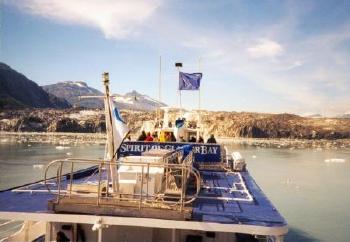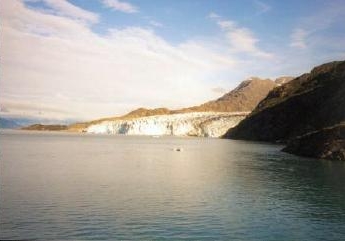Glacier Bay: Hoonah–Angoon Census Area of the Unorganized Borough, Alaska, USA (August 1995)
Grand Pacific Glacier

The Grand Pacific Glacier heads in the St. Elias Mountains and trends east into British Columbia. From there it flows southeast to the head of the Tarr Inlet along the Alaska – Canada border. The glacier completes its slow-motion journey in Alaska’s Glacier Bay National Park. However, the bulk of it extends into British Columbia’s Tatshenshini-Alsek Provincial Park. It stretches about two miles wide where it enters the water (map).

John Muir named the glacier in 1879. When Harry Fielding Reid visited in 1892 he found that it had receded so far that it had become three distinct glaciers. The largest and most northerly retained the name Grand Pacific. The middle one he named Johns Hopkins Glacier. The Harrington Expedition of 1899 named the smallest and southernmost of the three Reid Glacier in honor of the earlier expedition.
Reid Glacier

Harry Fielding Reid served as a geology professor from Johns Hopkins University among other places. He led expeditions to Glacier Bay in 1890 and 1892.

This glacier has been been thoroughly scoured and laid barren by natural forces. A thick layer of ice flows down to the sea through a landscape that resembles the surface of an extraterrestrial planet.
See the article index from the 1995 Southeast Alaska trip.

Leave a Reply